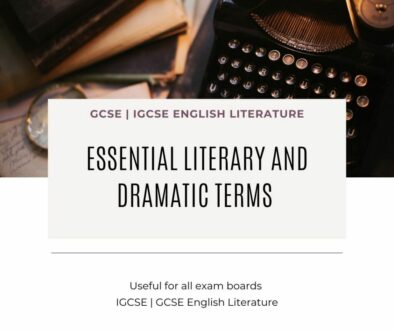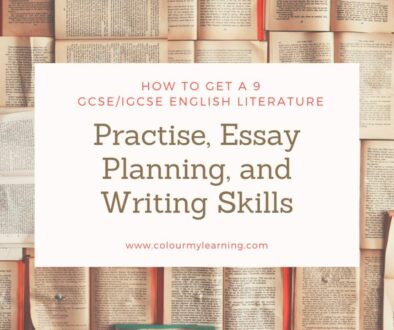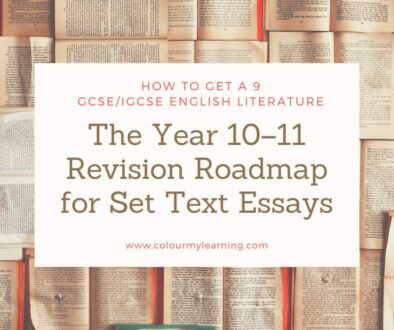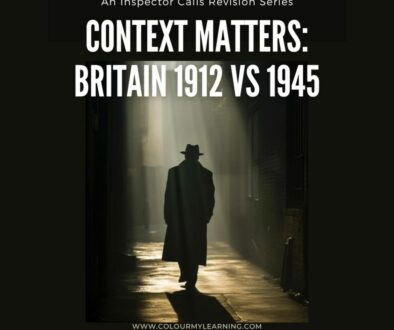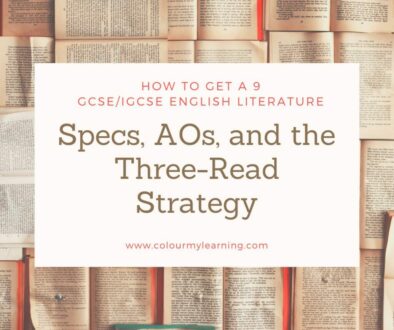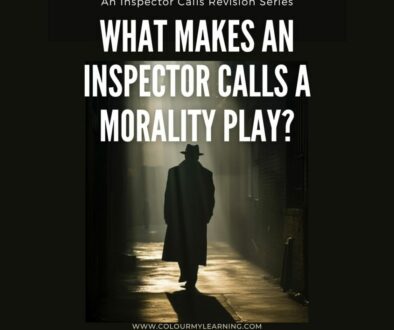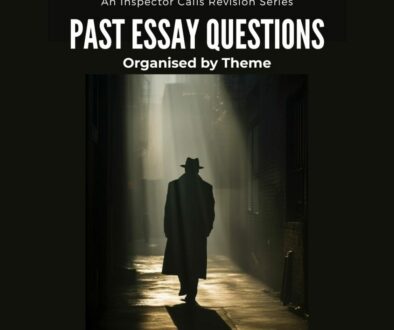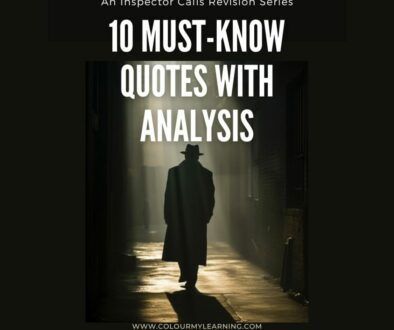How to Answer the Poetry Comparison Question – Edexcel IGCSE English Literature: Paper 1 Section B
In Section B of Edexcel IGCSE English Literature Paper 1, you will be asked to compare two poems from the anthology. This is a 30-mark question that gives you the chance to explore how poets communicate ideas through language, form, and structure, and to reflect on the choices they make when expressing themes and emotions.
The comparison task allows you to bring together your understanding of different poems, looking closely at what they share, how they differ, and how they each shape meaning through poetic techniques. It encourages close reading, clear thinking, and a thoughtful approach to writing.
Listening to the poems read aloud
Often when we listen to poetry read aloud we can pick up nuances of rhythm, rhyme, even word choices that might not be obvious when we read silently on our own. Listening to these poems aloud will help you gain a deeper appreciation and understanding of the form in general and the poems specifically.
For example if you listen to two different, but thematically related poems read aloud, you might find that the emotion and weight behind each poem slightly different, and this may give you more to consider when writing your comparison essay. Here you can listen to Anton Jarvis read the Anthology poems aloud on SoundCloud. See you different a poem might sound when it is read aloud compared to your quiet read.
This guide is here to help you build a confident and structured method for approaching the comparison question, using the assessment criteria as a foundation for your response.
What You’re Being Assessed On (AO2 and AO3)
The poetry comparison question in Section B is designed to assess two key skills. These are described in the exam as Assessment Objectives, and they form the foundation of what makes a strong response.
AO2 asks you to analyse how poets use language, form, and structure to shape meaning and create specific effects.
This means paying close attention to word choices, imagery, line breaks, rhythm, and the overall shape of the poem on the page.
AO3 focuses on how well you can explore connections between two poems.
These connections might be based on theme, tone, perspective, or technique, and your task is to bring these links into your writing with clarity and purpose.
To meet these objectives, your answer should:
Show a secure and thoughtful understanding of both poems
Discuss language choices and poetic devices used by each writer
Reflect on structure and form (rhyme, stanza length, voice)
Make clear comparisons throughout—not in separate blocks
Rather than writing about each poem separately, aim to weave your comparisons into each paragraph, so the links are always present and developing.
Understand the Question Format
In Section B of Paper 1, you will be given a choice of two comparison questions. Both questions are based on a theme, and both ask you to write about two anthology poems.
The first option names both poems for you. The second gives you one poem and invites you to choose another from the anthology that links clearly to the same theme. This gives you a degree of flexibility—some students prefer having the decision made for them, while others appreciate being able to select a poem they feel confident writing about.
Each question focuses on a theme—this could be a personal feeling, a relationship, a stage of life, or a social concern. Themes in past exams have included:
- Childhood
- Loss
- Relationships
- Memory
- Identity
- Power
- Conflict
The question will ask you to explore how the poets present this theme through their language, structure, and form. You will be expected to support your ideas with examples from the text.
Example question:
Compare how the poets present the theme of memory in ‘Piano’ and one other poem of your choice from the anthology. You should make reference to language, form and structure. Support your answer with examples from the poems.
You don’t need to cover everything in both poems. Instead, focus on what each poem reveals about the theme, how the poets present their ideas, and what choices they make to shape the reader’s experience.
A full list of past exam themes can be found in our breakdown of Section B Poetry comparison themes and practice questions.
Choosing the Best Question for You
In Section B, you’ll be given a choice between two comparison questions. One will ask you to write about two specific, named poems. The other will give you one named poem and invite you to choose the second poem from the anthology. Both options are equally valid. The key is to choose the one that gives you the clearest path to a confident, well-supported answer.
If You Choose the Question with Two Named Poems
This option works well when you are confident in both poems. It gives you a clear structure from the beginning, and there is no need to recall another poem on the spot. You already know the focus and can begin planning straight away.
Choose this option when:
- You know both poems well
- You feel secure about key quotes, structure, and themes
- You can see obvious links between the two poems in relation to the theme
- You want to focus on planning your answer rather than selecting a second poem
This approach can feel focused and manageable, especially if you’ve revised poem-by-poem and built strong familiarity with individual texts.
If You Choose the Question with One Named Poem and One of Your Own Choice
This option gives you more flexibility. It’s useful if one of the named poems feels unfamiliar, or if the theme immediately brings another poem to mind that you know well and can analyse confidently.
Choose this option when:
- You know the named poem, but not the other
- You have revised by theme and practised comparisons
- You are confident selecting and recalling another suitable poem
- You can support your answer with strong quotations and thoughtful links
- This approach works well for students who have built theme-based revision notes and enjoy making meaningful connections across different poems.
A Moment to Decide
Before you begin your answer, take 1–2 minutes to:
- Skim both questions
- Underline the theme in each
- Make a quick mental or written note of which poems you’d compare
- Ask: Which comparison offers more clear ideas, quotes, or structure?
- Whichever option helps you start planning with clarity is likely to be the one that leads to your strongest response.
How to Approach the Comparison
A well-structured comparison begins with close reading, followed by thoughtful planning. These steps will help you stay focused on the theme while developing a clear and balanced response.
Step 1: Read with the Theme in Mind
Before you begin writing, spend time reading both poems carefully. Keep the theme in mind as you work through each one. You’re looking for connections, patterns, and contrasts that relate directly to the focus of the question.
As you annotate, you might highlight:
- Key images or metaphors that relate to the theme
- Shifts in tone, perspective, or mood
- Language that evokes emotion or creates atmosphere
- Structural features such as stanza breaks, repetition, or punctuation that guide the reader’s experience
This first step will help you to spot techniques that the poets have used and also help you notice how each poem develops its ideas.
Step 2: Plan Around Points of Connection
Instead of writing a full paragraph on one poem and then the other, aim to structure your plan around shared ideas or contrasting perspectives. Each paragraph should bring the poems into conversation with one another.
You might ask:
- What theme or emotion is being explored in both poems?
- How does each poet approach this theme?
- What choices in form or structure influence the way meaning is shaped?
Planning with this in mind helps you move beyond summary and begin building thoughtful comparisons.
Step 3: Build Each Paragraph as a Comparison
A strong comparative paragraph connects the poems through both theme and technique. You can follow this structure to help your ideas flow clearly:
- Point – Introduce a shared idea or contrast
- Evidence – Choose short, precise quotes from each poem
- Analysis – Explore how the poets use language, form, or structure
- Comparison – Draw a clear link between their approaches
- Effect – Reflect on how these choices affect the reader or shape meaning
Example Paragraph
Both Piano and Poem at Thirty-Nine explore the theme of personal memory. In Piano, Lawrence uses gentle rhythm and nostalgic imagery—“a child sitting under the piano”—to create a sense of warmth and longing. In contrast, Walker’s Poem at Thirty-Nine uses fragmented syntax and direct address—“How I miss my father”—to convey a more reflective and emotional distance. Both poets create an atmosphere of intimacy, but the tone in Piano feels rooted in tenderness, while Walker’s poem is shaped by maturity and quiet strength.
This kind of paragraph shows the examiner that you are not only understanding each poem, but thinking carefully about how they relate to one another.
Using Literary Terminology Thoughtfully
When writing about poetry, the use of literary terms helps you explain how meaning is created. These terms give you the language to describe what the poet is doing—whether its shaping mood, guiding rhythm, or building an image in the reader’s mind.
Some terms you might use include:
- Metaphor / Simile – for comparing ideas or images
- Enjambment / Caesura – for exploring how a poem flows or pauses
- Rhyme / Rhythm – to reflect tone, structure, or emotional effect
- Persona / Tone / Voice – to describe the speaker’s presence
- Juxtaposition / Volta – to discuss contrast and change in direction
These features become most meaningful when you link them directly to the poem’s message or emotional effect. Rather than simply naming a technique, try to explain how it supports the theme or creates a particular response in the reader.
For a full guide to the most useful poetic terms at GCSE level, you can explore our article:
17 Poetic Devices for GCSE English Literature
Exam Tips for Section B
These gentle reminders can help you stay focused and thoughtful during the poetry comparison question:
- Keep the poems in dialogue throughout your answer. Let your comparisons develop naturally, rather than writing about each poem in isolation.
- If you are choosing your second poem, select one you know well and feel confident comparing in relation to the theme.
- Use short, purposeful quotations that link clearly to your analysis.
- Take time to plan your response before you begin writing—this makes your comparisons clearer and more focused.
Practise comparing different poem pairings during revision, especially around common themes such as memory, identity, relationships, and power.
Final Thoughts
The poetry comparison task is an opportunity to explore how writers shape meaning across different voices and forms. As you read and reflect, you’re learning to notice patterns, understand contrasts, and express your interpretation with clarity.
This kind of analysis takes time to develop, but with regular practice and a calm, structured approach, it will become more intuitive. You may even find that reading poems side by side offers new ways to enjoy language and understand perspective. Every comparison offers an opportunity to learn and each thoughtful response is a step towards deeper reading, better understanding and stronger writing.


